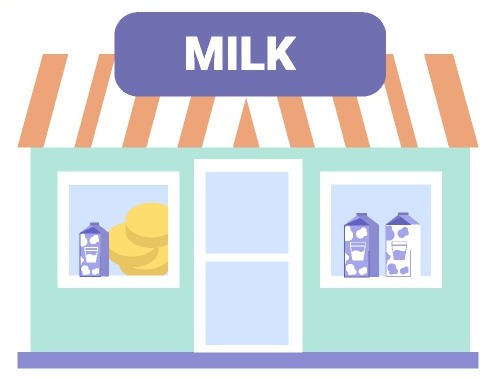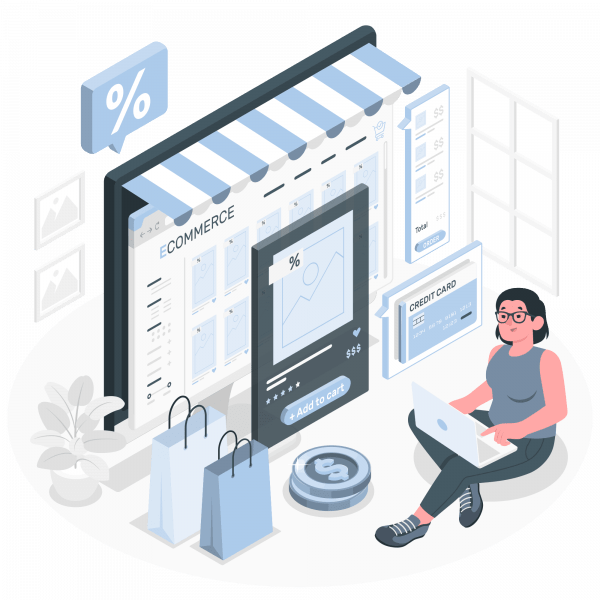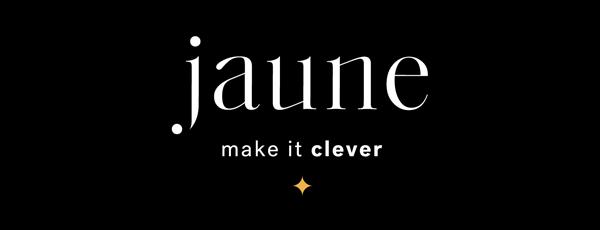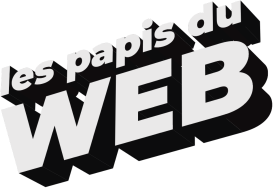In our previous article on B2C / B2B issues, we briefly discussed the issue of pricing, although there is much to be said on the subject! So let’s take the time to explore some key points of product pricing, with its similarities and differences between B2C and B2B.
DEFINING THE PRICE OF A PRODUCT IS NOT SO SIMPLE…
Setting the price of a product seems obvious, but it’s not always the case! The difficulty doesn’t come from the price itself, but from its application: what product is actually being sold?
The answer is (often) easy in B2C: overall, all customers have the same profile and buy few different products and in low quantities. Therefore, a price is set on the product consumed by the customer.
It’s much more complex in B2B, with a wide variety of sales situations: from ordering an ink cartridge by an SME (activity similar to B2C) to ordering dozens of models of t-shirts in different colors and sizes in thousands of units by a client with negotiated contract prices, there is everything!
To illustrate the following, let’s take the example of milk sold in 1L boxes. In B2C, it can be offered individually (the box alone) or in packs of 6 boxes. In B2B, it will be by box of 10 boxes (10 liters) or pallet of 144 packs (864 liters). Other packaging options exist (especially depending on the shape of the box), but let’s keep it simple!

The merchant has a choice when defining the selling price:
- Price per consumed unit (the box), with multiplication rules (×6 for the pack, ×10 for the carton, ×864 for the pallet);
- Price per consumed unit (the box), with multiplication rules and quantity thresholds that minimize the unit price according to the packaging (-2% for the pack, -3% for the box, -15% for the pallet, for example);
- Price per packaging (box, pack, cartonbox, and pallet);
- Price according to a mix of approaches (for example, price per box and per pack, then a reduction on the price of packs sold by the box or pallet).
But how do you make the right choice? It’s all about context and compromise, based on several determining factors:
- The market and the competition;
- Regulatory and normative framework;
- Customer profiles and purchasing habits;
- Merchandising applied in physical stores and/or on the e-commerce site;
- Stock movements and the supply chain;
- The ability of tools to properly manage and exploit pricing rules.
The first three factors are exogenous and therefore concern all actors in the industry (unless the positioning is to introduce a real disruption in the product distribution).
The last three are endogenous and represent the opportunities and constraints that each merchant has. The way the product is presented in the store (front-office) is a choice resulting from commercial objectives, but also from the ability to manage the back-office and the frequency of stock movements.
In addition to this, there are sometimes traceability constraints (food, pharmaceutical products, aircraft spare parts…) that push merchants to simplify the management of their stock before complexifying their pricing system.
USAGES THAT DISRUPT PRICING
In B2C, in France, distributors sell milk in 1L boxes (or plastic bottles) and in packs of 6 boxes (or 6 bottles). Offering sales by a carton of 10 boxes doesn’t make much sense, and even less so by a pallet of 864 boxes!
The situation seems simple, but merchants are not short of ideas! For example, why not create a promotional pack of 6+2 (6 boxes at full price + 2 boxes at 50%), all under a specific barcode and with a price for this pack of 8? Nothing too complicated, except that…
A peculiarity exists in physical stores: a customer can break open a pack of six and retrieve a single box. At the checkout, the applied price will be that of a single box. In theory, this sale triggers several successive events on the stock:
- 1 normal pack removed from the stock
- 6 boxes added to the stock
- 1 box sold removed from the stock
If the broken pack is a promotional pack of 6+2, we will have:
- 1 promotional pack removed from the stock
- 8 boxes added to the stock
- 1 box sold removed from the stock
The merchant will probably not have the means to constantly monitor the stock movements triggered by their customers. The ability to properly manage inventory as close to reality as possible will determine how product references are defined and thus what the price will be applied to (single box only, box + volume discount by quantity of 6, box + pack, promotional price on 8 boxes…). It requires both human resources (management and cleaning of the shelf, inventory of stock) and adapted technical solutions (traceability of stock movements, definition of low stock thresholds, reserve stocks, prices attached to the simplest packaging to manage…).
A small convenience store may have an interest in selling only the box to simplify their workload, whereas a hypermarket will be able to cover both the box, the normal pack, and the promotional pack.

Of course, the situation is simpler with an e-commerce site: the customer cannot break open a pack. But if the site offers drive-through sales from the physical store’s stock, beware! It is then difficult to guarantee the availability of packs on the e-commerce side: they may no longer exist physically on the shelves, having been broken open into individual boxes by physical store customers.
PRICE BY PACKAGING, THE NORM IN B2B
Let’s move to the B2B side, where milk sales are rarely done by unit. There is a good chance that the standard working unit is the pack of 6. The box is then the product offered in its intended use, but not the one sold (the customer receives packs, or even boxes or pallets). The price is defined on the packaging sold to the customer, not on the product used.
Unlike in B2C, B2B uses a large number of packagings to cover all uses and facilitate logistics. This directly impacts e-commerce sites that must offer more complex customer journeys (relations between packagings, entering packaging references, choosing packaging, box and pallet plans…).
Note that for marketing reasons, the merchant often displays a price per unit (the milk box) to facilitate comparison of offers on the customer side. For example, “pack at €5.4 excl. VAT, or €0.9 excl. VAT per liter”. We come back to a price per box already seen in B2C, but it is not really that of the box, it is the 6th of the price of the pack!
TYPES OF PRICES WITHOUT THEORETICAL LIMITS, BUT WITH SOME PRACTICAL LIMITS
So far, we have only seen the simple case of applying a price to a product (or more precisely, to a packaging). But we can make it more complex (without even talking about promotions):
- Price per packlot composed of different products (2L of milk + 250g of chocolate powder)
- Price according to a measurement (L, kg, linear meter, m2, m3…)
- Price according to options (size, color, service, subscription duration)
- etc.
Each time, it is necessary to question the ability to properly manage the prices of these advanced cases according to the available resources (product reference management, pricing rules management by tools, inventory management, order preparation and shipment…).
For example, does my lot “2L of milk + 250g of chocolate powder” have its own reference and price? Or is it the addition of the prices of each with a small discount? Is my e-commerce site able to apply the price calculated by the ERP? Is my ERP able to understand and process this lot ordered on e-commerce? Do my warehouse preparers know where to look for this lot or how to assemble it on demand?
In the end, we always come back to attaching a price to a sold product packaging, but the decision deserves consideration, especially in B2B where complex cases are much more numerous than in B2C.
Now that we know what a price applies to, let’s see what we mean by “price”.
BY THE WAY, WHAT EXACTLY IS A PRICE?
It’s always better to start on a good fundations when talking about prices. Here are some definitions that are valid for both B2C and B2B:
NORMAL PRICE
Also called standard price or base price, it is defined for a rather long period and applied by default.
REFERENCE PRICE
It serves as the calculation basis to show the customer the price difference during a reduction. It should not be confused with the normal price because it can be defined by taking either:
- the normal price
- the lowest price applied by the merchant in the 30 days preceding the start of the commercial operation
- the price recommended by the manufacturer or importer
- the maximum price resulting from a regulatory framework (the case of books in France is the most well-known).
PUBLIC PRICE
This is a recommended price defined by the manufacturer or importer on a very large market and on which the merchant does not have control (unlike the reference price).
OBSERVED PRICE
It represents the average price applied on a market. As it is the merchant who chooses the market perimeter, it is not always very objective…
TIERED/PRICING
It allows the unit price of a product to be reduced according to the quantity purchased, respecting thresholds (example with our milk cartons: one price for 1 carton, another for a multiple of 6 cartons).
DISCOUNTED PRICE
It is the price resulting from a commercial reduction. This is where most price reductions for B2C are hidden: discount on the purchase of a certain quantity of the same product, according to the customer profile, according to a marketing operation period, according to the volume of previous purchases, etc. The situations and criteria for application can be very varied but are well-regulated by legislation, including the European directive known as “Omnibus”. Of course, discounted prices also exist in B2B.
TBD PRICES
Its application remains exceptional. It allows for covering a deficiency in performance during a sale, such as a product quality defect. It cannot, therefore, be generalized to all sales (unless all products have a defect!).
REBATE PRICE
This is a price reduction on the total amount of orders placed by a customer over a period (quarter, year…). The customer will, therefore, pay less for products already ordered (not to be confused with discounts that are applied to each purchase). Its use is very rare in B2C because it is not compatible with immediate payment, unlike B2B where cumulative payments at the end of the period are frequent.
CASH DISCOUNT
We cannot really link the discount to a product price since it is a reduction of the amount to be paid in the event of early payment. It is a reduction on a financial operation and not on a commercial operation. The displayed price of the product should not show the amount resulting from the discount. However, the total amount of the order takes it into account if the early payment is made (for example, 5% discount for payment by credit card at the time of order, rather than by transfer within 30 days). Here again, the discount is an exception in B2C activities.
THE MAJOR DIFFERENCES IN PRICE MANAGEMENT BETWEEN B2C AND B2B
The application of a normal price, a tiered price, or a discounted price is the norm on all B2C e-commerce sites. This is done more or less simply depending on the activities, product types (products with configuration or options), and tool capabilities, but it is the minimum to be implemented to sell and hope for good results.

Discounts granted to B2C customers are based on an infinite number of criteria, but those that serve as a basis are the product (quantity discount, clearance…), customer profile (new customer, Gold customer…), and order context (order placed before a certain date, basket composition…).
What works well for B2C also works very well for B2B. Don’t forget that the professional buyer is still an individual, accustomed to buying for himself! He will remain sensitive to commercial actions tailored to the B2C market.
However, the professional buyer has many other requirements, and the commercial relationship is no longer between a company and a physical person, but between two companies. Some aspects of pricing are very specific to B2B:
PRICING MATRIX
Pushed to the extreme, it allows for defining a price per product, quantity, and customer. This means that not all customers will see the same price for 5 pallets of 864 milk bricks! The personalization of the customer relationship is very advanced, but it has a cost: the enormous quantity of price combinations that need to be managed in the tools, especially if the matrix updates are frequent.
PRICES NEGOTIATED BY CONTRACT
We are not far from the pricing matrixtariff grid goal: personalizing the relationship with the B2B customer. But there is a particularity here: prices are negotiated by contract. They must, therefore, be applied according to the clauses of this contract, which specify the products concerned and the duration of the application of prices. This means that once the contract has expired, the customer’s prices change (normally without human intervention if things are well done!).
NEGOTIATED PRICES
Another frequent approach in B2B: case-by-case negotiation. It often involves a request for a quotation that will be studied and confirmed by the merchant. The customer (or merchant) will then transform the quotation into an order, with prices per product that will be specific to that order.
PRICES BY MARKET
Some purchasing centers negotiate prices for a very large geographical area (for example, Europe). The unit price of a product can then vary within the same order, depending on the quantity intended for each territory within this area. This approach allows the customer to obtain interesting prices on volume while preserving the supplier from local variations in product value or currency exchange rates.
PRICES BY QUALITATIVE THRESHOLDS
In some activities, product quality is variable (e.g. wood, meat, aggregates…). The normal price applied, therefore, depends on the level of this quality. If we add this point to the tariff grid or negotiated prices, the volume of price combinations can quickly explode!
When it comes to the IT aspect of B2B pricing, many questions arise:
- What is my price reference?
- Is it capable of handling several hundred million price combinations?
- Can it apply to my negotiated price contracts?
- Can it provide the exact price of a product to a customer quickly enough?
- Is the e-commerce site compatible with the way the reference manages prices?
- Can I use the price reference directly, or do I need to pre-calculate all prices to gain performance?
- How do I update prices across all sales channels?
- How do I manage time zones and price indices to comply with price contracts negotiated with an international customer?
- Which tool issues invoices with the actual prices of the products applied?
- …
We are far from the simple binary response “one product = one price”…
CONCLUSION
This article deliberately emphasizes some points of friction concerning price definition. Most of the time (especially in B2C), situations are simple. We wish you that! Otherwise, it is simply a matter of taking the time to reflect. Some particularities (frequent in B2B) have a direct impact on operational processes, and it is better to anticipate them.
It is not always intuitive, but a price poorly applied can do more harm than a price poorly valued, simply because logistics and digital tools do not follow the reality of the physical world.
Explore all topics related, directly or indirectly, to the application of prices! It is a delicate balance between supply and capabilities that we can help you find in all circumstances!



